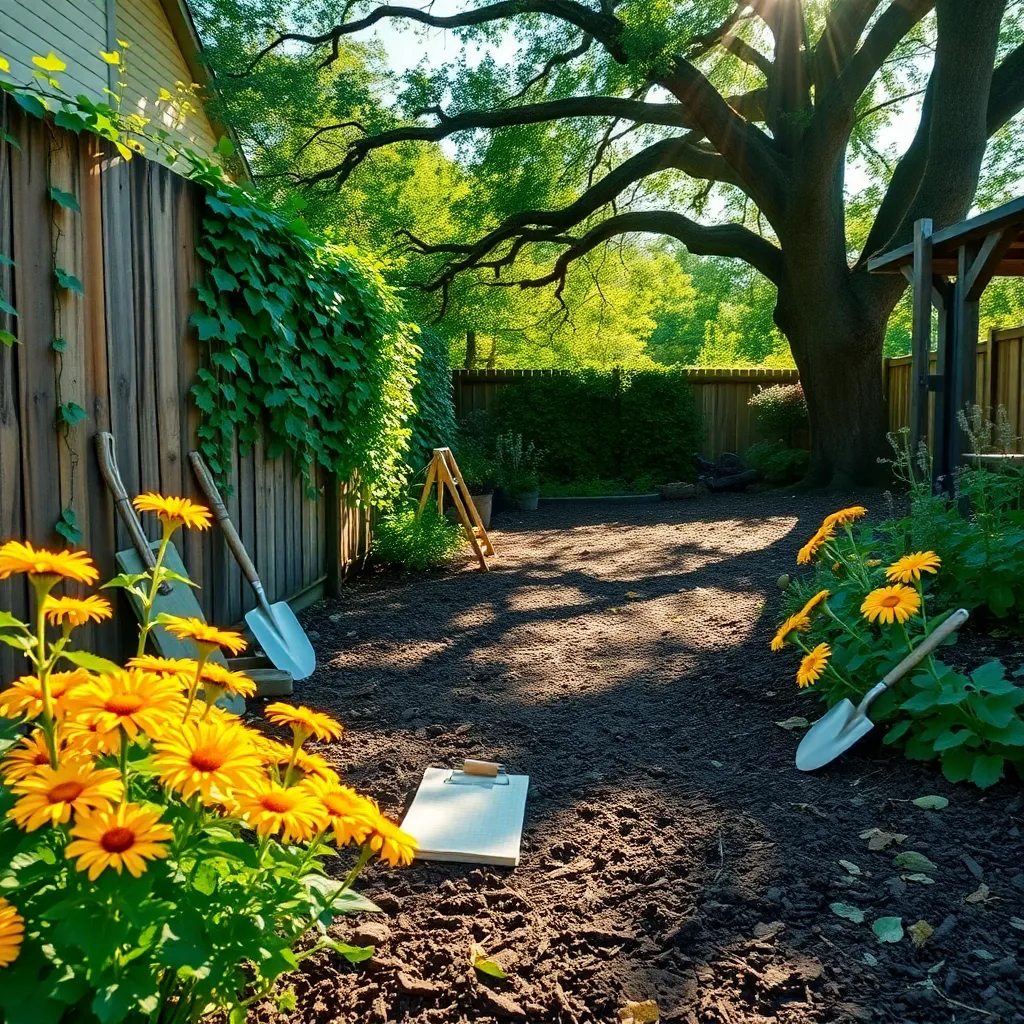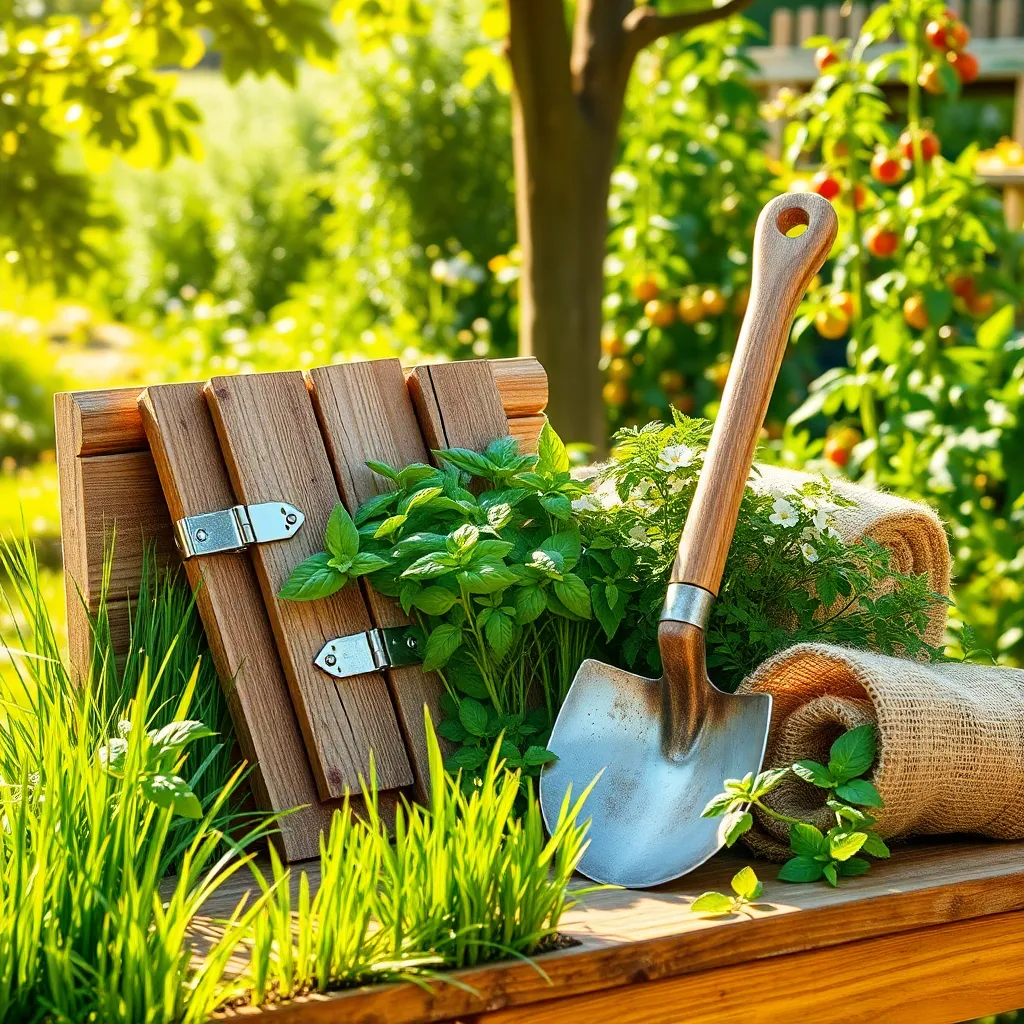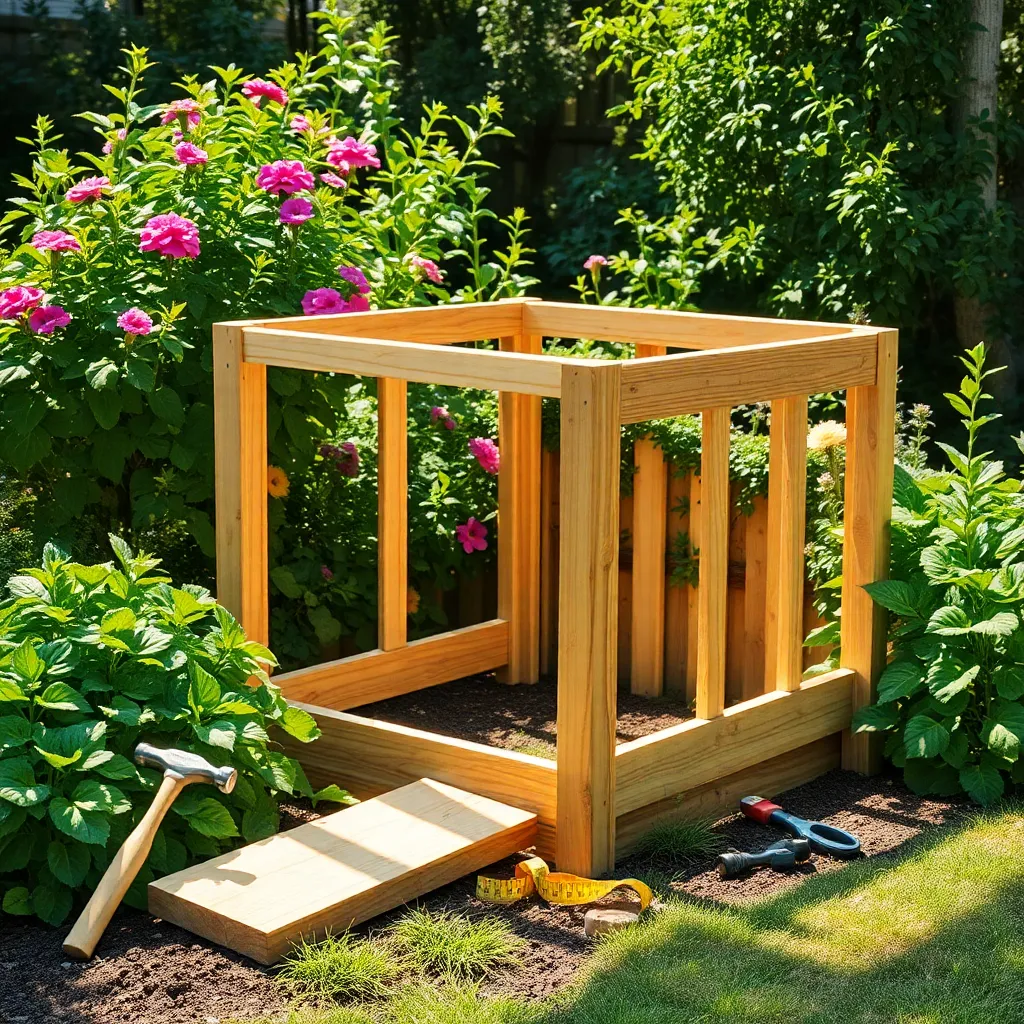Transforming kitchen scraps and garden waste into nutrient-rich compost is a magical process that can invigorate your garden like nothing else. Whether you’re just starting out in the world of gardening or have been nurturing your green sanctuary for years, building a compost bin at home is a rewarding project that offers endless benefits. Not only does composting reduce waste, but it also enriches the soil, helping your plants flourish without the need for chemical fertilizers.
Imagine turning those peels, leaves, and coffee grounds into a dark, crumbly treasure that feeds your plants naturally. In this article, we’ll guide you through the steps of building your very own compost bin, tailored to fit your space and needs. You’ll discover the best materials to use, how to maintain your compost pile, and tips for troubleshooting common issues. By the end, you’ll be equipped with the knowledge to create a sustainable cycle of growth in your backyard, making your garden healthier and your environmental footprint smaller.
Select a Suitable Location

When selecting a location for your compost bin, consider both convenience and practicality. Place the bin in a spot that’s easily accessible from your kitchen or garden to streamline the process of adding waste materials.
It’s vital to choose a location that receives a balance of sun and shade. While compost needs heat to decompose effectively, too much direct sunlight can dry out the pile, so aim for a spot that receives partial shade during the hottest part of the day.
Ensure that the area has good drainage to prevent water from pooling around the bin, which can lead to unpleasant odors. A site with a slight slope or a raised area can help water run off, keeping the compost aerated and healthy.
For those with limited space, consider a compact compost bin that can fit neatly into a corner of your garden or even a balcony. Many gardeners find it beneficial to place their bin near a water source to easily add moisture when needed, especially during dry spells.
Gather Necessary Materials

Now that you’ve chosen the perfect spot for your compost bin, it’s time to gather the necessary materials to get started. You’ll need a few simple items that are often readily available at home or can be easily purchased from a garden center.
First, you’ll require a container or structure to hold your compost. This could be as simple as a wooden pallet setup, an old garbage can with holes drilled into it, or a commercial compost bin. Always choose a material that allows for good airflow, as proper aeration is crucial for composting success.
Next, gather organic materials to fill your bin, such as kitchen scraps and yard waste. Aim for a balanced mix of “greens” and “browns”—greens include vegetable peelings and grass clippings, while browns consist of dried leaves and small branches. A good rule of thumb is to maintain a ratio of about 2 parts brown to 1 part green to keep everything well-balanced.
Additionally, having a pitchfork or shovel on hand will make turning your compost pile much easier. Regular turning is essential to aerate the pile, which speeds up the decomposition process. For those looking to step up their composting game, consider adding a thermometer to monitor internal temperatures, ensuring your compost is reaching optimal conditions.
Assemble the Bin Structure

Begin by laying out your materials in a clear, open space where you can easily access everything. This will help you avoid unnecessary delays and keep your workspace organized. As you start assembling the bin, use a level to ensure that your base is even and stable. A stable foundation is crucial for the longevity and effectiveness of your compost bin.
Next, secure the corners of the bin using sturdy screws or nails, ensuring they are tightly fastened. Corner stability is essential to prevent the structure from collapsing under the weight of decomposing matter. Consider using weather-resistant materials like cedar or recycled plastic, as these help prolong the lifespan of your bin. Durable materials can withstand the elements, making your compost bin a lasting investment.
Assemble the side panels by attaching them to the base and corners, checking for alignment to maintain a neat structure. Adjustments during this step are easier than trying to fix a crooked bin later. For those with more experience, adding a lid to your compost bin can help regulate moisture levels and deter pests. A well-fitted lid also keeps your compost safe from excessive rain, which might otherwise leach nutrients.
Finally, ensure there are gaps or slats in the sides to allow for adequate airflow, which is crucial for the composting process. Proper ventilation accelerates decomposition and reduces odors. If you’re looking to optimize your compost bin further, consider adding a removable front panel for easy access when turning or harvesting compost. This practical feature makes it simpler to manage the composting process, encouraging you to maintain your bin regularly.
Add Ventilation and Access

Adding ventilation to your compost bin is crucial for promoting healthy decomposition. To achieve this, drill several holes around the sides and bottom of your bin using a drill bit that is about 1/4 inch wide, ensuring adequate airflow throughout.
Consider spacing the holes about 4 to 6 inches apart to maintain consistent air circulation. This simple step helps prevent the compost from becoming anaerobic, which can lead to unpleasant odors and slow down the composting process.
Incorporate a door or removable panel for easy access to your compost. This feature allows you to effortlessly turn the pile, which is essential for evenly distributing air and moisture, thereby speeding up decomposition.
Using hinges or sliding panels can make access more manageable, especially for larger bins. Ensure that any access points are securely closed when not in use to deter pests and retain the right amount of moisture.
For those with more experience, consider adding a mesh covering over the ventilation holes. This addition prevents pests and rodents from entering while still allowing air to flow freely, thus maintaining the balance necessary for effective composting.
Regularly turn your compost with a pitchfork or compost aerator to keep it well-ventilated. This practice not only accelerates decomposition but also helps maintain an even temperature, which is crucial for breaking down materials efficiently.
Position Bin and Start Composting

Choosing the right location for your compost bin is crucial for effective composting. Position your bin in a level area that receives partial sunlight, as too much direct sun can dry out the compost, while too much shade can slow down the decomposition process.
Ensure your compost bin is easily accessible year-round, even during the rainy season. Place it near a water source so you can easily moisten the compost when necessary, as maintaining the right moisture level is key to successful composting.
Avoid placing the bin too close to your home or any wooden structures, as compost can attract insects or cause wood to rot over time. Consider the wind direction to minimize any potential odors reaching your living spaces, especially if your compost includes food scraps.
Once the bin is in place, start by adding a balanced mix of green and brown materials. Layering is essential; begin with coarse materials like twigs or straw to aid ventilation at the bottom, followed by alternating layers of greens and browns.
Conclusion: Growing Success with These Plants
In exploring the construction of a compost bin at home, we’ve uncovered five pivotal relationship concepts: collaboration in planning, communication in execution, nurturing growth through shared responsibilities, patience in allowing the process to mature, and celebrating the rewards of teamwork. Each of these elements not only enriches your composting journey but also strengthens your personal connections, whether with family, friends, or partners.
As a practical next step, why not gather your loved ones and discuss how you can apply these principles to a small project together, like starting a herb garden? This simple act of collaboration can foster deeper bonds and provide a tangible way to practice what you’ve learned.
Remember, the path to successful relationships is paved with small, intentional actions. Bookmark this article as a handy guide on your journey, ensuring you have these valuable insights at your fingertips whenever you need a reminder.
Looking ahead, embrace the idea that nurturing relationships is much like composting: with care, patience, and a shared commitment, your connections will flourish, bringing joy and fulfillment to all involved. Take the first step today and watch your relationships thrive.

